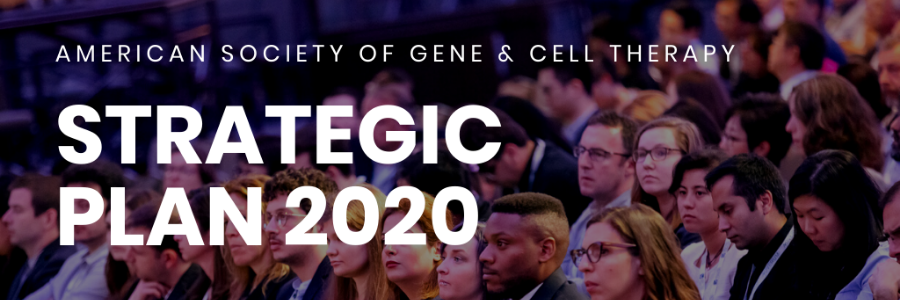ASGCT Releases Three-Year Strategic Plan
Edith Pfister, Ph.D. - January 16, 2020
Gene and cell therapies are rapidly transforming medicine. Read the full 2020 strategic plan to understand where ASGCT is heading, and why.

Decades of work in the field of gene and cell therapy are finally coming to fruition as treatments for rare and genetic diseases are starting to reach patients who need them. As the field continues to expand, ASGCT’s priorities must reflect this time of growth and change. The ASGCT Board of Directors, alongside a broad and diverse group of member-volunteers, has developed the Society’s strategic plan for the next three years.
As a member of ASGCT’s 2019 Strategic Planning Committee, I’m excited and honored to not only be the one who introduces this plan to the ASGCT membership, but to be the one who lays out this roadmap publicly on behalf of the Society.
The plan, made up of five priorities—communication, education, access, innovation, and global outreach—covers broad bases of which the Society believes represent the concerns of membership across academia, medicine, and industry. The Society’s strategic plan will guide its efforts from 2020-2022 as it works to inform, educate, and advocate for gene and cell therapy in the United States and around the world.
Download the Full Strategic Plan
Read on to learn about the five priorities and how each one will help the Society reach its goal of bringing new and innovative therapies to patients:
Communication
It is becoming more and more important to communicate with the public about new developments as gene and cell therapy moves from the bench to the clinic. Communicating about scientific discoveries and clinical applications to patients, the public, and the media will help to make ASGCT the most trusted source for information about the field.
Education
There is a need to educate members and other stakeholders on a diverse range of topics including science, policy, and leadership now that an influx of new people have entered the field, and ASGCT is rising to the occasion. To do this, the Society will expand its scope of educational programming at the Annual Meeting and Policy Summit as well as on-demand content on the Society’s website. ASGCT will also look to leverage partnerships with other scientific, clinical, and advocacy organizations to deliver co-branded educational content.
Access
Access to treatment has become a concern as gene and cell therapies have become more commercialized. No matter who we are, industry or academic, young or old, we are all in this field to bring new therapies to patients. If patients cannot access new therapies due to location, lack of access to genetic testing, or any other reason, we will have failed. Our primary goal is to promote dialog between different constituents, to encourage understanding, and to advocate when appropriate.
Innovation
While there has been rapid progress in gene and cell therapy over the past few years, particularly in bringing new therapies to the clinic, the Society encourages continued innovation in the field and in basic science. To do this, we will focus on engaging with the National Institutes of Health to increase research funding and establishing new grant and award programs to support member research efforts. Gene therapy is inherently interdisciplinary, so the Society will work to promote collaborations and partnerships with other organizations.
Global Outreach
ASGCT aims to bring gene therapy to more patients around the world. To accomplish this goal, the Society will foster contact between international researchers and societies to help promote equitable access to gene and cell therapy globally. ASGCT will also work to incorporate global audiences into its own programming.
Edith Pfister, Ph.D., is assistant professor at the University of Massachusetts Medical School, chair of the ASGCT Communications Committee, and a member of ASGCT’s 2019 Strategic Planning Committee.